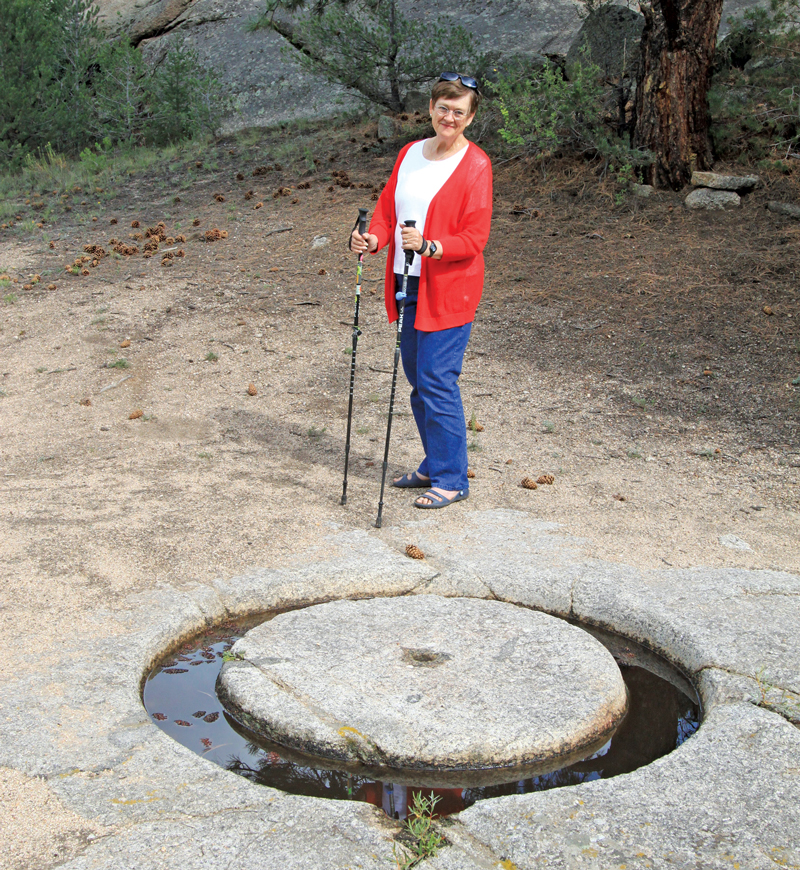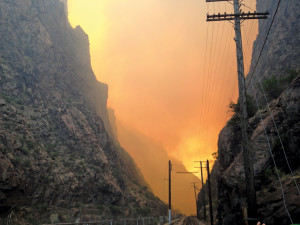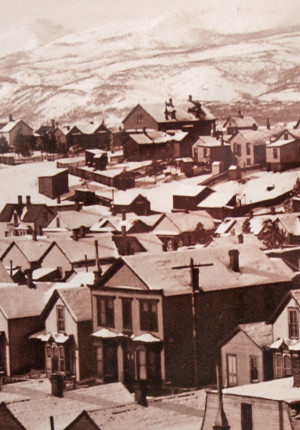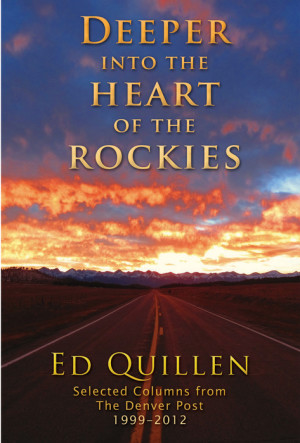By Kenneth Jessen
In its simplest terms, an arrastra is a grinder and dates back thousands of years. The grinding surface is typically flat bedrock situated near a stream. A vertical pocket is drilled into the rock, and a perpendicular pole is placed in the pocket. Attached to the pole near its base is a horizontal beam and attached to the beam, usually by chains, is a heavy stone that does the grinding. Farther up the pole is a long horizontal beam that is used to turn the arrastra. As the pole is rotated, ore is placed in the path of the stone and the ore is crushed against the bedrock. Eventually, this process creates a groove in the bedrock that is telltale evidence that an arrastra once existed.

The most common use in Colorado was to grind ore containing gold flakes. The ore was placed on the grinding surface, and after many hours the ore was pulverized into a powder. A small amount of mercury was added during the process to amalgamate the gold. The gold-mercury amalgam settled to the bedrock while the worthless rock was flushed away using water from the nearby stream. The amalgam was then collected and strained through a cloth to remove most of the mercury, leaving behind a gold button. The remaining mercury was driven off in a retort, condensed and reused. The gold required further refining to remove the remaining impurities.
Arrastras were used in the absence of large, efficient gold mills or in remote locations. They were very limited in the amount of material that could be processed.
Arrastras in Colorado are rare. Many have been cut out of the bedrock and moved to museums. One example that is still in its original location is relatively easy to reach. It is north of Buena Vista on Fourmile Creek. It requires only a short walk from a U.S. Forest Service road.
To reach this arrastra, follow Colorado Avenue north from downtown Buena Vista. The road crosses the Arkansas River and becomes CR371. Within site of the first Colorado Midland Railroad tunnel, CR375 heads east and uphill. After a mile, CR376 drops down to Fourmile Creek. This road is prone to washouts and it quite sandy – it may require four-wheel drive. After crossing the creek, there is a small parking area on the right. By stepping over a fence (not posted) and walking west, there is a wide gravel wash. The wash leads to the arrastra located at the edge of the trees at a distance of about 400 feet.




